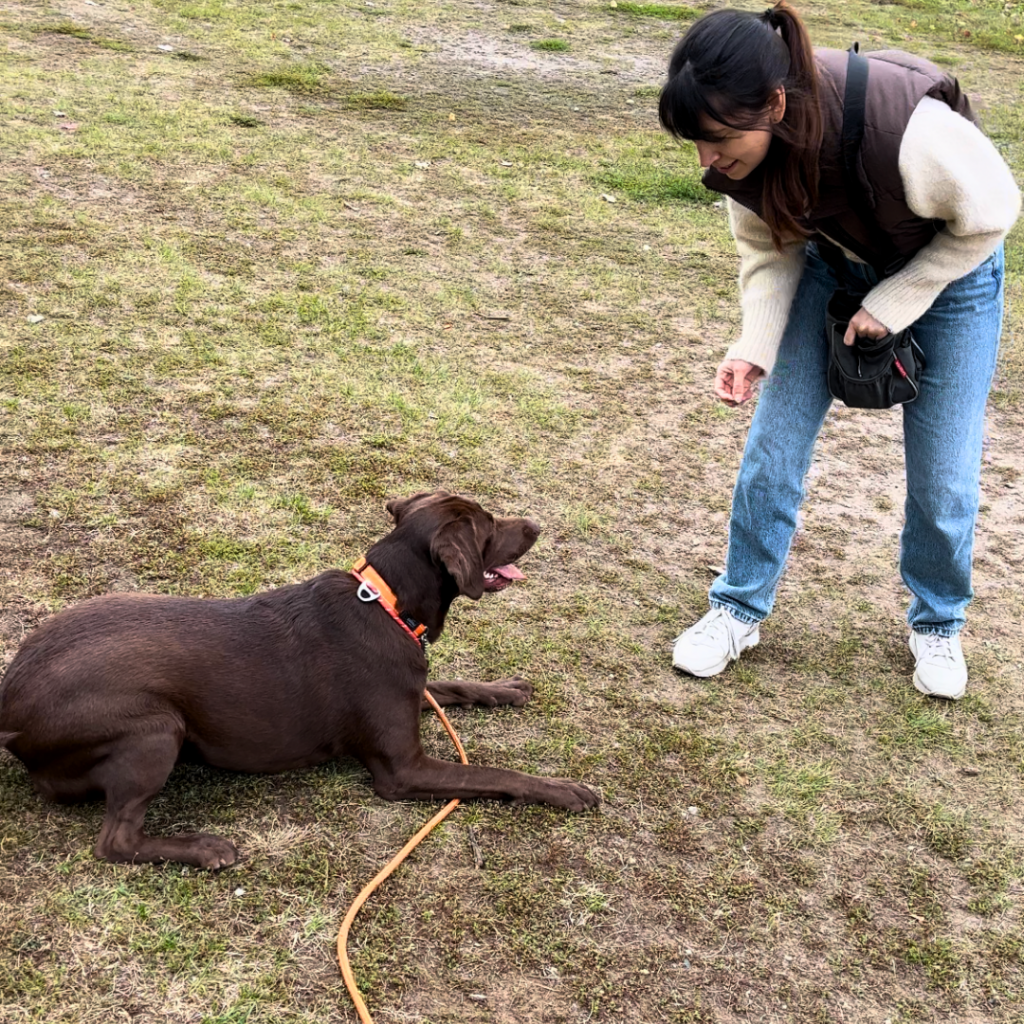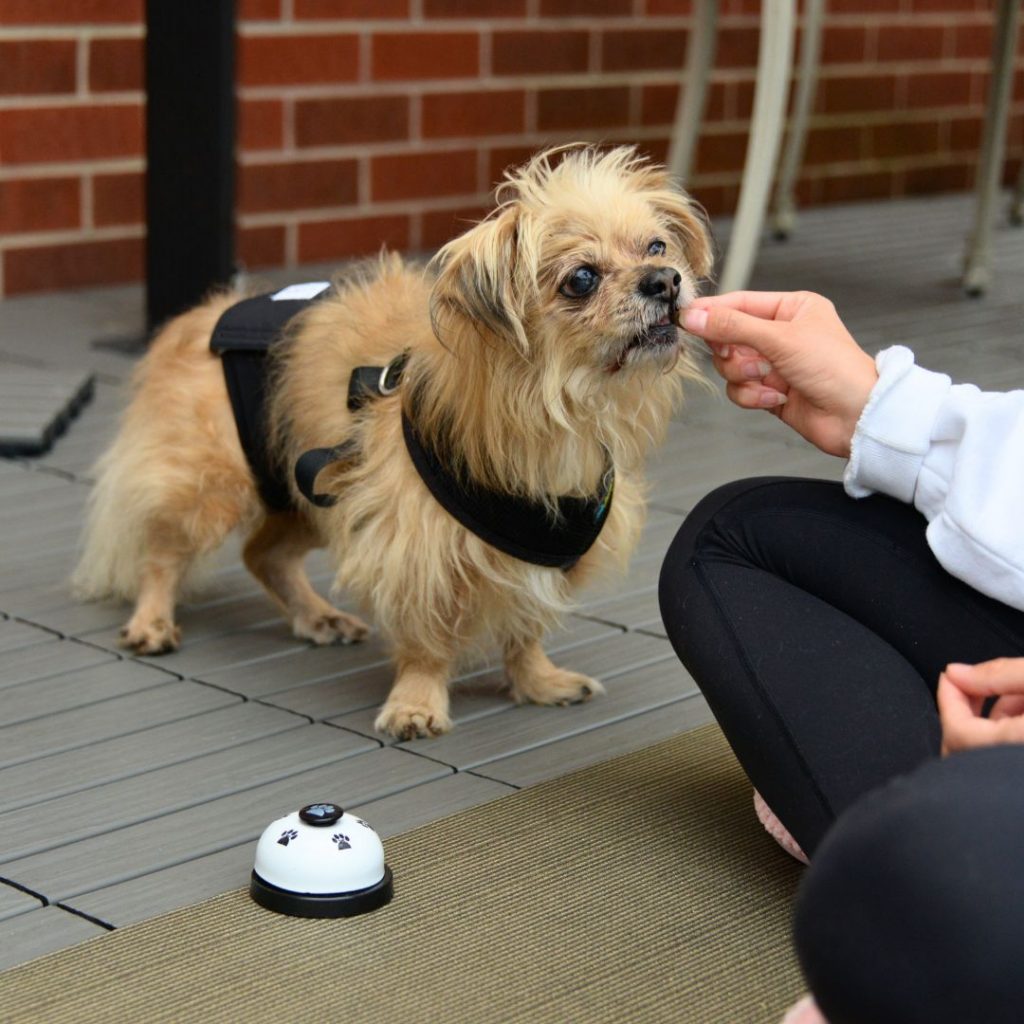
Barking is an essential part of a dog’s communication, so it is not realistic to expect them to be quiet all the time. However, barking becomes a problem when it’s triggered by every little stimuli or quickly escalates to an avalanche of noise.
Dogs can bark because they are guarding their territory, when they feel anxious or stressed, they want to get their owner’s attention, or in the case of senior dogs may be for medical conditions causing confusion or discomfort. In any case, barking means something so it is important to address it.
Let’s decode why your senior dog may be barking for no apparent reasons and what are the potential solutions.
Why is my senior dog barking for no reason?
Older dogs undergo several mental and physical changes which may result in being more vocal. Here are some common reasons for that:
Cognitive dysfunction
Cognitive decline in senior dogs can lead to confusion and disorientation. This can cause them to bark seemingly without reason. The symptoms can vary, but some common signs include:
- Emotional changes, such as increased anxiety or irritability.
- Loss of social inhibition and bad manners, such as food aggression or stealing.
- Attention-seeking behavior, constantly seeking interaction or needing reassurance.
- Night waking and disrupted sleep patterns.
- Obsessive-compulsive behavior, such as constant pacing or inability to settle.
- Disorientation and confusion, especially when alone or in the dark.
- Memory loss and breakdown in house training.
To help manage cognitive dysfunction in pets, there are several solutions you can try:
- Provide mental stimulation through training and interactive toys to keep their mind active.
- Maintain a regular routine to provide a sense of security and reduce anxiety.
- Use environmental enrichment, such as puzzles or treat-dispensing toys, to keep them engaged.
- Consider using medications, such as selegiline or propentofylline, under veterinary supervision to improve brain function.
- Ensure a balanced and nutritious diet, including antioxidants and vitamins, to support brain health.
- Establish a comfortable and relaxing sleep environment, with low noise levels and the use of pheromone diffusers.
- Seek veterinary advice and regular check-ups to monitor your pet’s condition and adjust treatment as needed.
Every pet is unique, so it’s important to work closely with your veterinarian to develop a personalized management plan for your pet’s cognitive dysfunction.
Pain and discomfort
Older dogs may develop painful conditions, which can cause them to bark as a way of expressing their discomfort. Arthritis is one of them/ This condition causes joint pain, and the symptoms include stiffness after rest, limping on a particular leg, licking at the affected joint, and difficulty moving. Pets with arthritis may also be protective of the joint and may show signs of discomfort or pain when touched.
To manage arthritis in pets, there are several approaches:
- Non-steroidal anti-inflammatory drugs (NSAIDs) can help reduce inflammation and relieve pain in arthritic pets. These medications should be prescribed by a veterinarian and given according to their instructions.
- Certain supplements, such as glucosamine and chondroitin, can help support joint health and reduce inflammation. These supplements may be available over-the-counter or recommended by a veterinarian.
- Excess weight puts additional stress on the joints, so maintaining a healthy weight is important for arthritic pets. A balanced diet and regular exercise can help with weight management.
- Physical therapy techniques, such as hydrotherapy or gentle exercises, can help improve joint mobility and reduce pain in arthritic pets. These therapies should be performed under the guidance of a veterinarian or a certified animal physical therapist.
- Making changes to the pet’s environment can help reduce pain and improve mobility. This can include providing ramps or steps for pets to access higher surfaces, using orthopedic bedding, and providing soft surfaces for pets to walk on.
- Some pet owners find that alternative therapies, such as acupuncture or laser therapy, can provide pain relief for arthritic pets. These therapies should be performed by a qualified practitioner.
Consult with a veterinarian to develop an individualized treatment plan for your pet, as the specific needs can vary, and regular check-ups and monitoring are also important to ensure the treatment plan is effective or can be adjusted as needed.
We also have an in-depth article to support your pet’s joint health: How to Help a Senior Dog with Arthritis
Hearing loss
Older dogs may experience hearing loss, which can result in them barking more frequently as they may not be able to hear other sounds that would normally distract or calm them.
Symptoms of hearing loss in senior dogs can include not responding to sounds or commands, being easily startled or surprised, not waking up when called, and increased barking or vocalization.
To help a senior dog with hearing loss, you can use hand signals and visual cues instead of relying only on verbal commands. You can also provide a safe and quiet environment to reduce noise-induced stress. Additionally, keeping your dog on a leash or long line during walks can help keep them safe from potential dangers since they may not be able to hear approaching vehicles or other hazards.
Separation Anxiety
Dogs may become anxious and distressed when they are left alone or separated from their owner. This can be more common in older dogs due to changes in their behavior and cognitive function.
Signs of separation anxiety in senior dogs may include:
- Excessive barking or howling
- Destructive behavior
- Pacing or restlessness
- House soiling
- Loss of appetite
- Excessive drooling.
Separation anxiety can cause stress and negatively impact the dog’s overall well-being, so it is important to not leave untreated. The most common strategies to manage this problem are
- Behavior modification techniques, such as desensitization and counterconditioning.
- Medication.
- Providing a safe and comforting environment for the dog when they are alone.
However, there are various ways to deal with this problem, here you can find more separation anxiety solutions for your dog.
If the problem persist, consult with a veterinarian or a professional dog trainer for guidance and assistance in managing separation anxiety in senior dogs.
Attention-seeking behavior:
Some senior dogs may bark to get attention from their owners, especially if they are feeling lonely, bored, anxious, or stressed. Other reasons include medical conditions that we discussed before such as cognitive dysfunction, pain and discomfort.
To address attention-seeking behavior in senior dogs, first rule out any underlying medical conditions by consulting with a veterinarian. If no medical issues are found, providing mental and physical stimulation can help alleviate attention-seeking behavior. This can include engaging in regular play sessions, providing puzzle toys or treat-dispensing toys, and incorporating training exercises to keep their minds active. Additionally, maintaining a consistent routine, providing comfort, and offering positive reinforcement for desired behaviors can help reduce attention-seeking behavior.

Solutions to excessive barking in senior dogs
Excessive barking can be a frustrating behavior, but there are several approaches you can take to reduce it. Here are some tips:
Rule out medical issues
First, consult with your veterinarian to ensure that there are no underlying health problems causing the excessive barking. Like we saw before, pain, hearing loss, or cognitive dysfunction can contribute to this behavior.
Identify the triggers
Pay attention to what causes your dog to bark excessively and try to minimize the exposure. Is it certain noises, people, or other animals?
Provide mental and physical stimulation
Boredom and lack of exercise can contribute to excessive barking. Make sure your dog is getting enough mental and physical stimulation through regular walks, playtime, and puzzle toys.
We also recommend checking brain training, it is especially important for senior dogs to prevent cognitive decline and it is equivalent to a 40 min play session.

Use positive reinforcement
Reward your dog for quiet behavior. When they stop barking or when they are calm, praise them, and offer treats or a favorite toy. This reinforces the desired behavior and helps them understand what you want from them.
You can also teach your dog to bark on command. This command is useful because if you can’t get rid of the behavior, at least you can control when and for how long your dog will bark. To do this, wait for your dog to naturally bark. As soon as he does it, mark the behavior (you can use a clicker or verbal mark) and give him a treat. Repeat this several times until your dog associates the marker with the action of barking. Once your dog has made the connection, put a name to the command, such as “Speak” or “Bark” right before he barks. Practice, practice, practice and over time, your dog will learn to bark on command when he hears the cue.

Avoid punishment
Punishing your dog for barking can create fear and anxiety, which may worsen the behavior. Instead, focus on positive reinforcement and redirecting their attention to more appropriate behaviors.
Seek professional help if needed
If your dog’s excessive barking persists despite your efforts, consider consulting with a professional dog trainer or behaviorist. They can provide personalized guidance and help address any underlying issues contributing to the behavior.
Conclusion
You may initially think that your senior dog has developed a bad habit to bark at nothing, but as we know now that is not the case. Your dog is trying to communicate with you, whether he is telling you he is bored, anxious, stressed, or in pain, it is important to address the cause because it can negatively impact their overall wellbeing.
First rule out any underlying medical condition, such as cognitive decline or arthritis. If that is the reason for your dog’s bark, talk with your vet to design a specific plan to manage the condition. If it is more a behavioral issue, address it by providing enough mental and physical stimulation, positive reinforcement or consulting with a professional dog trainer or behaviorist.
Remember to be consistent and patient. With time and positive reinforcement, you can help your dog learn more appropriate ways to communicate.
Related Articles
- How to Stop My Senior Dog Barking at Night
- How to Help a Senior Dog with Arthritis
- How to Train A Deaf Dog: Expert Tips and Techniques
- Best Joint Supplements for Senior Dogs
Recent Posts
This summer, the temperatures are getting extremely high, and as you may know, dogs don’t sweat like humans to regulate their body temperatures. They mostly use their paws and breathing to cool...
Is the Dogo App Worth It? Honest Review After Training My Dog
Training your dog shouldn’t feel like another chore, but it often does because, unless you’re a professional trainer, you have to research everything yourself first. And that research can take...
